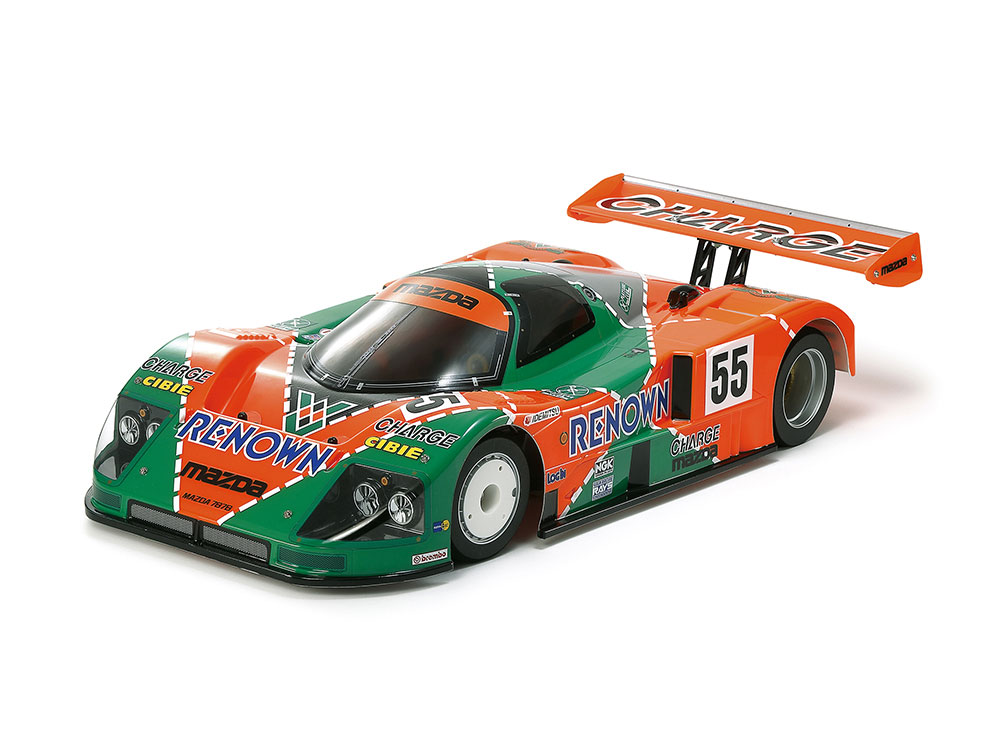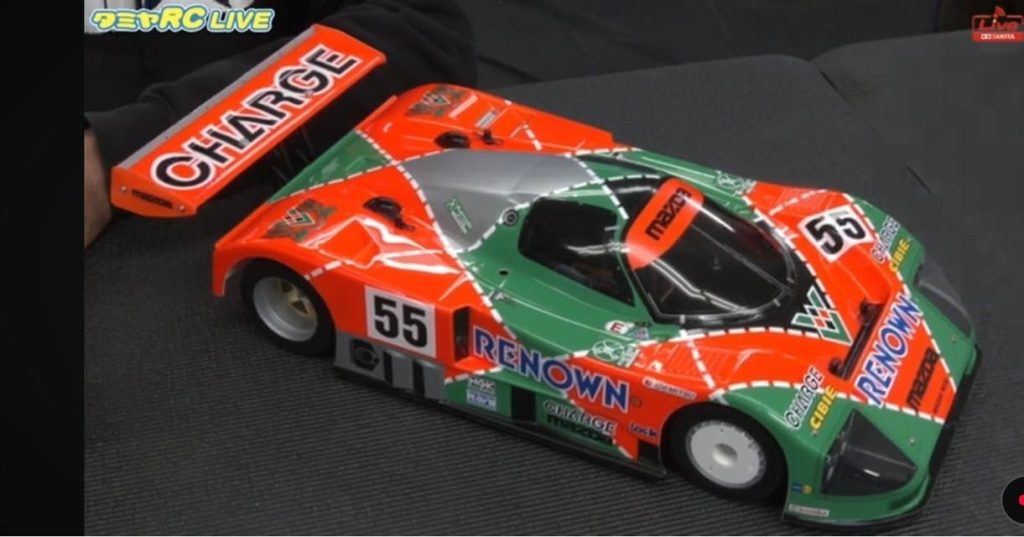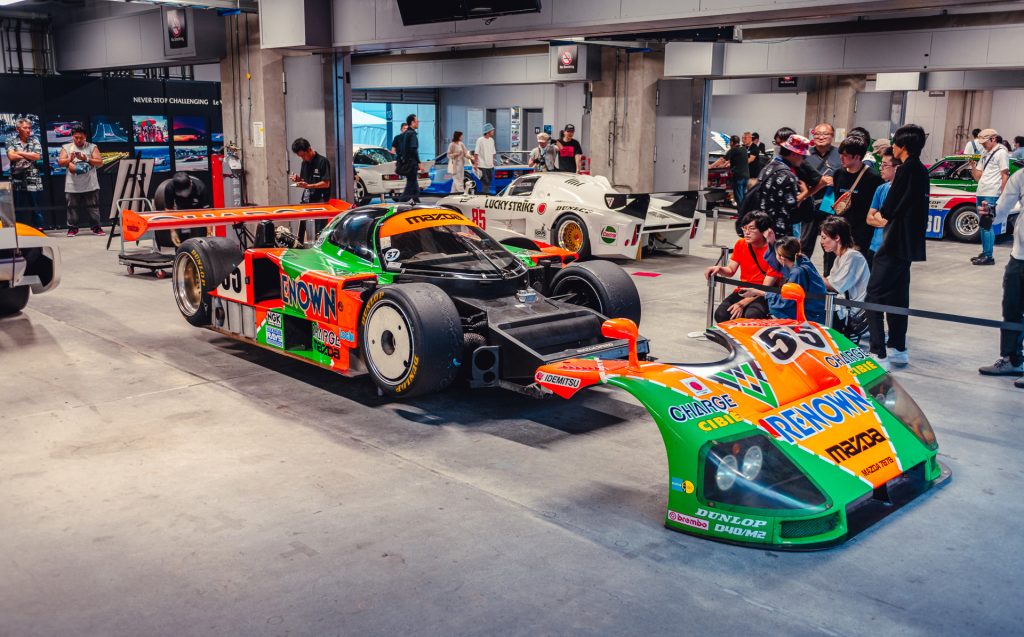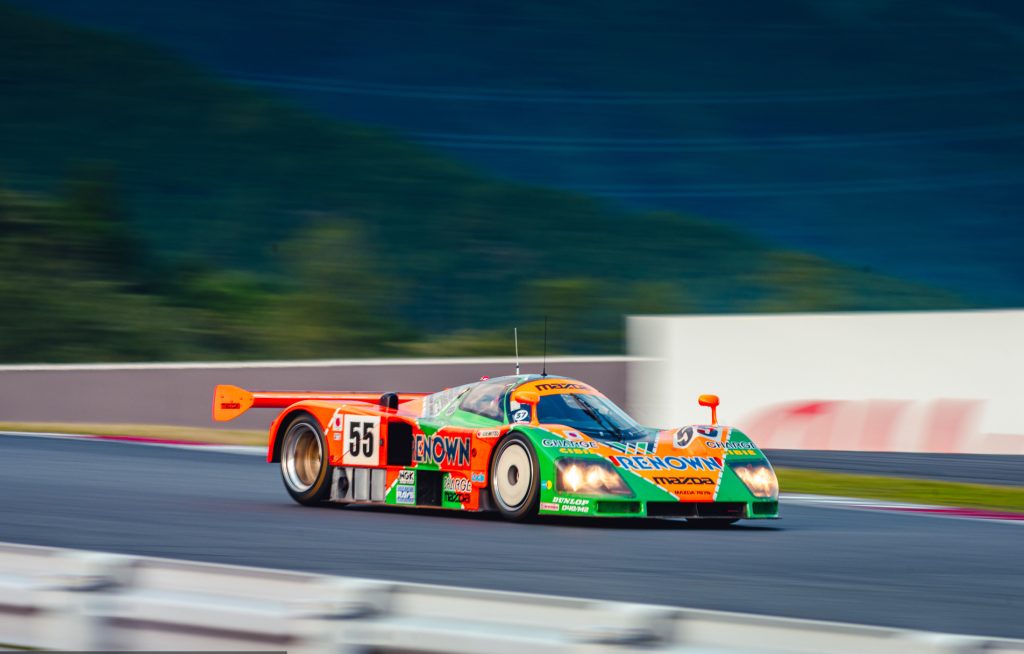Tamiya (田宮模型) has released the 1/10 Mazda 787B RC car, an electric remote-controlled assembly kit based on the Mazda 787B. The original car made history in the 1991 24 Hours of Le Mans by becoming the first Japanese-made car to win the overall championship.

This new model features a composite chassis comprised of an ABS resin bathtub main frame, front and rear resin space frames, and an FRP plate on the underside. The front suspension utilizes an independent Kingpin spring structure, while the rear suspension employs a 3P system that controls a 1.5 mm thick FRP T-bar and is equipped with a CVA oil-pressure shock absorber. With the use of shims, the front suspension can be adjusted in two stages and the rear suspension in three stages. The direct-drive 2WD system, featuring a sport-tuned motor, transmits power directly to the spur gear and is paired with a ball differential that operates smoothly with a limited-slip effect. The wheels are made with one-piece molded hubs fitted with high-grip sponge tires. The body is adorned with vibrant paint and has been pre-painted and marked. Overall dimensions: approximately 475 mm in length, 217 mm in width, 106 mm in height, and a weight of about 835 grams. The product code is 47518, and it is scheduled for release on March 29, 2025.

Related Introduction:
In 1991, the Mazda 787B became the first Japanese-made race car to win the overall championship in the 24 Hours of Le Mans. Developed on the basis of 13 years of racing experience at Le Mans, it is powered by an R26B 4-rotor engine.

Thanks to advanced technologies such as a variable intake system, a triple spark plug ignition system, and peripheral intake injection, the engine’s maximum output reaches 700 horsepower. Among the three 787Bs that competed, car No. 55—driven by V. Weidler, J. Herbert, and B. Gachot—gradually improved its position from 19th, surpassing Porsche, Mercedes-Benz, Peugeot, and the 1990 defending champion Jaguar XJR12. It ultimately covered approximately 4,923 kilometers, breaking the previous year’s record and achieving a stunning victory.
